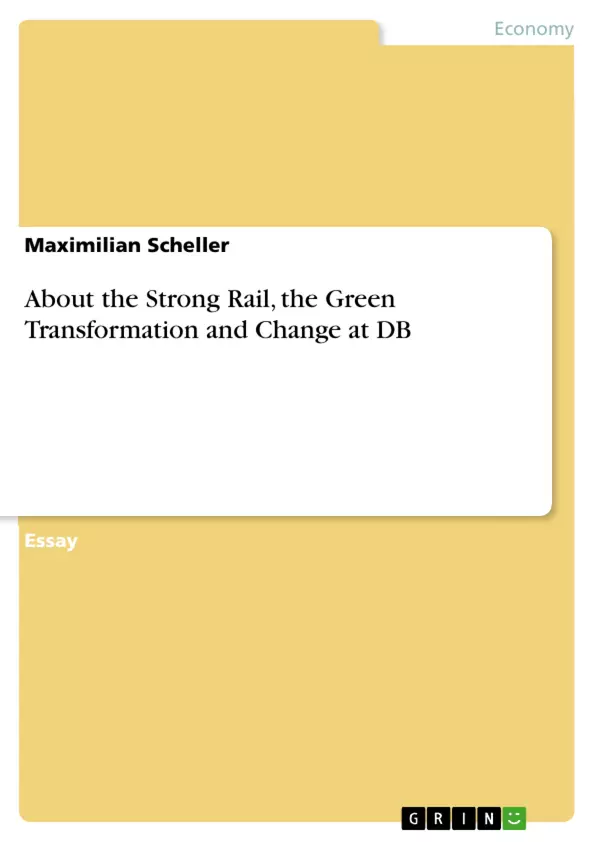“Germany needs a Strong Rail” - this is the slogan Deutsche Bahn (DB) uses to announce its umbrella strategy with which it wants to fulfill its responsibility as a climate protector and connector of politics, business, and society. For a sustainable transformation of the mobility sector, DB sees itself as an important factor in achieving the German and European climate targets. This is because DB is a corporation under private law, which is 100 percent owned by the Federal Republic of Germany. The ambitious goals for the implementation of the Strong Rail are therefore closely linked to the central transport and climate policy goals of the Federal Government. The ownership structure thus gives DB a certain key role in the implementation of the mobility turnaround. Therefore, the Strong Rail is an integral part of the solution for better climate protection in Germany.
Inhaltsverzeichnis (Table of Contents)
- The Strong Rail
- The Green Transformation
- Deutsche Bahn in a change process
Zielsetzung und Themenschwerpunkte (Objectives and Key Themes)
This text analyzes the strategic approach Deutsche Bahn (DB) has taken with its "Strong Rail" strategy to achieve a sustainable transformation of the mobility sector in Germany. It examines the program's core objectives, its connection to broader political and societal goals, and its role in climate protection.
- The "Strong Rail" strategy as a comprehensive plan for the modernization of DB's infrastructure and services
- The Green Transformation as a key component of the Strong Rail strategy aimed at greening DB's products and services
- The role of climate change in driving the need for sustainable mobility and the transformative changes required within DB
- The challenges and opportunities associated with implementing such a large-scale change process within a corporation
- The importance of employee engagement and participation in driving the successful implementation of the Strong Rail strategy
Zusammenfassung der Kapitel (Chapter Summaries)
- The Strong Rail: This chapter outlines the core principles and goals of the "Strong Rail" strategy, emphasizing DB's commitment to climate protection and its role as a connector of politics, business, and society. It also details the key building blocks of the strategy, including infrastructure expansion, employee recruitment, and the development of a nationwide "Deutschlandtakt".
- The Green Transformation: This chapter focuses on the Green Transformation as a critical component of the Strong Rail strategy. It explains how this initiative aims to progressively green all DB products and services through 164 concrete measures categorized into five central fields of action, encompassing climate protection, nature conservation, resource protection, noise protection, and social responsibility.
- Deutsche Bahn in a change process: This chapter examines the broader context of DB's change process, highlighting the multiple external and internal drivers, including the mobility turnaround, political change processes, and the need to address infrastructural deficiencies. It also emphasizes the importance of Kotter's 8-stage change model as a framework for guiding the transformation process.
Schlüsselwörter (Keywords)
The key themes and concepts explored in this text revolve around the German railway system's transformation, with a particular emphasis on sustainable mobility, climate protection, and change management. This encompasses the “Strong Rail” strategy, the Green Transformation, employee engagement, and the role of DB in a broader context of societal and political change.
- Quote paper
- Maximilian Scheller (Author), 2022, About the Strong Rail, the Green Transformation and Change at DB, Munich, GRIN Verlag, https://www.grin.com/document/1359350



